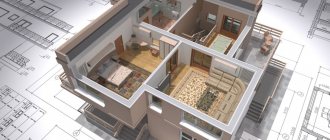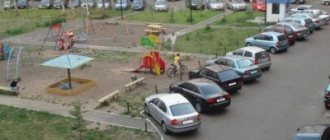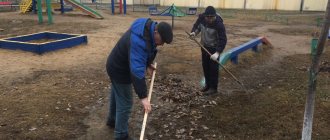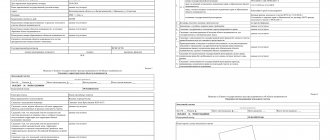According to Article 36 of the Housing Code of the Russian Federation, the owners of the adjacent territory are the owners of housing in an apartment building.
1. The owners of premises in an apartment building shall own, by right of common shared ownership, the common property in the apartment building, namely:
...4) the land plot on which this house is located, with elements of landscaping and improvement, other objects intended for the maintenance, operation and improvement of this house and located on the specified land plot. The boundaries and size of the land plot on which the apartment building is located are determined in accordance with the requirements of land legislation and legislation on urban planning.
In new buildings, from the moment of registration of ownership of the apartment, the owner of the home automatically becomes the owner of the adjacent territory on the right of common shared ownership.
Unlike new buildings, in the old housing stock there are common cases when the land plot under the house was not previously formed and was not registered in the cadastral register. Such a site belongs to the municipality, and not to the apartment owners. Why this is good, what is bad, and whether it is possible to register such land as common shared ownership - read our article.
Owned land near the house - pros and cons
If the land under the house belongs to the owners of the premises, they can improve the local area, build various objects in the yard (children's playgrounds, sports grounds, etc.), resolve issues with parking and barriers in the yard, rent out objects and land in the yard of the house. All these issues are resolved at general meetings of owners by voting.
When the yard is owned by the apartment owners, in the event of demolition of the house (for example, when it is recognized as unsafe), when assigning compensation, not only the square meters of the premises belonging to the residents are taken into account, but also the land plot.
The advantage of registered land is that apartment owners themselves control what can appear in the courtyard of the house and what cannot. When the land is not registered, cafes and shops can be located on it, which can interfere with a quiet life.
After registration of the land into common shared ownership, the payment for housing maintenance will increase, since it will be necessary to maintain order in the local area and maintain the objects located in the yard. It is also possible that the tax base will increase - this is due to an increase in the cadastral and market value of the premises in the house. But this is a kind of investment in your real estate - if you plan to sell the apartment in the future, it will be more attractive to buyers.
Who owns the local area?
Disputes about rights to land plots on which apartment buildings are located
66. According to Part 1 of Article 16 of the Federal Law “On the Enactment of the Housing Code of the Russian Federation” (hereinafter referred to as the Introductory Law) and Part 1 of Article 36 of the Housing Code of the Russian Federation (hereinafter referred to as the Housing Code of the Russian Federation), the owners of premises in an apartment building belong to the right of common share ownership of a plot of land with elements of landscaping and landscaping on which an apartment building and other real estate objects included in such a house are located (hereinafter referred to as the apartment building).
By virtue of parts 3 and 4 of Article 16 of the Introductory Law, upon the application of any person authorized by a decision of the general meeting of owners of premises in an apartment building, the authorities carry out the formation of the land plot on which the house is located.
If the land plot under an apartment building was formed before the entry into force of the Housing Code of the Russian Federation and state cadastral registration was carried out in relation to it, the right of common shared ownership of it among the owners of premises in the apartment building is considered to have arisen by force of law from the moment the Housing Code of the Russian Federation came into force (Part 2 Article 16 of the Introductory Law).
If a land plot under an apartment building was formed after the entry into force of the Housing Code of the Russian Federation and state cadastral registration was carried out in relation to it, the right of common shared ownership of it among the owners of premises in the apartment building arises by force of law from the moment of state cadastral registration (Part 5 of Article 16 Introductory Law).
By virtue of parts 2 and 5 of Article 16 of the Introductory Law, the land plot under an apartment building passes into the common shared ownership of the owners of the premises in such a building free of charge. No acts of the authorities on the emergence of the right of common shared ownership among the owners of premises in an apartment building are required.
67. If the land plot has not been formed and state cadastral registration has not been carried out in relation to it, the land under the apartment building is owned by the corresponding public legal entity. At the same time, within the meaning of parts 3 and 4 of Article 16 of the Introductory Law, the owner does not have the right to dispose of this land in the part in which a land plot for an apartment building should be formed. In turn, the owners of premises in an apartment building have the right to own and use this land plot to the extent necessary for their operation of the apartment building, as well as the objects that are part of the common property in such a building. When determining the limits of the powers of the owners of premises in an apartment building to own and use the specified land plot, it is necessary to be guided by Part 1 of Article 36 of the Housing Code of the Russian Federation.
In these cases, the owners of premises in an apartment building, as the legal owners of the land plot on which this house is located and which is necessary for its operation, by virtue of Article 305 of the Civil Code of the Russian Federation, have the right to demand the elimination of any violations of their rights, even if these violations were not associated with deprivation of possession, as well as the right to defend one’s possession, including against the owner of the land plot.
68. Owners of premises in an apartment building have the right to challenge in court, taking into account the jurisdiction of cases, according to the rules of Chapter 25 of the Code of Civil Procedure of the Russian Federation or Chapter 24 of the Arbitration Procedure Code of the Russian Federation, the actions (inaction) of the authority to form the land plot on which the house is located, to develop documentation for the planning of the territory (Articles 45 and 46 of the Town Planning Code of the Russian Federation), as well as actions preceding the disposal of a land plot, in particular decisions on the provision of a land plot for construction, on holding auctions for the sale of a land plot or the right to conclude a land lease agreement, etc.
If, as a result of such actions of the government authority, third parties have a right to a land plot necessary for the operation of an apartment building, the owners of the premises in it may apply to such third parties in court with a claim aimed at challenging the relevant right, or with a claim for establishing the boundaries of a land plot.
When considering these claims, the court resolves controversial issues related to the boundaries of a given land plot in accordance with the requirements of land legislation and legislation on urban planning activities (Part 1 of Article 36 of the RF Housing Code). In this case, the burden of proving the circumstances that served as the basis for the formation of a land plot within the disputed boundaries and size rests with the relevant authority.
The court decision that established the boundaries of a land plot is the basis for changing information about this land plot in the state real estate cadastre.
General meeting of homeowners
If you want to register the right of common shared ownership of the local area, the first thing you need to do is hold a general meeting of homeowners in the house. The initiator can be any owner, initiative group or management organization. We wrote earlier how to conduct a general meeting correctly.
To make positive decisions on the issue of forming a land plot and the issue of determining shares in the right of common shared ownership of a land plot, you need to get more than 50% of the votes “for” such decisions.
At the meeting, it is also necessary to appoint a responsible person or several persons from among the owners who will deal with the issue of land registration, submit documents and represent the interests of the remaining owners.
Public cadastral map of Russia online
This year, the cadastral valuation of the site should have an indicator that will be as close as possible to the market value, otherwise, the amount of taxes and rent that the owner of the site will pay will be much higher. Cadastral map of three cities of federal significance: Moscow (Moscow region) St. Petersburg (Leningrad region, “Peter”) Sevastopol
They can be installed if such a decision is made at a meeting of the owners of all premises in the building in question. To do this, a meeting must be convened, based on the results of which such a decision will be made, documented in the form of a signed protocol. An example of a land surveying project for apartment buildings is divided into several stages:
The adjacent territory of an apartment building: how to determine and where to find out its boundaries? Plan and example of a project for surveying the territory of an apartment building
- in the State Real Estate Cadastre. All information contained there is reflected on the public cadastral map posted on the official website of Rosreestr.
This allotment has its own boundaries, which must be established and formalized properly.
That is, in accordance with clause 4, part 1, article 36 of the Housing Code, the adjacent territory should be considered that plot of land that is occupied not only by the house itself, but also by its parking, fire routes, playgrounds, as well as engineering communications that ensure full functioning of a particular house.
So, how is the local area of an apartment building determined? For cases where a house does not have a cadastral passport and there is no official data on its area, a formula is taken into account that can be used to calculate the size of the local area of an apartment building according to the law.
Application for the formation of a land plot
After the decision is made, the responsible person - any owner of premises in an apartment building - can apply to the local administration with an application to form the land plot on which the apartment building is located and to register this plot with cadastral registration. The issue of land registration is handled by the city property department.
The application will be considered and, on its basis, a resolution will be issued to approve the layout of the land plot on the cadastral map of the territory for the purpose of further registration of the land plot with state cadastral registration.
How to find out the boundaries of your yard and what is it for?
We explain how to determine the size of the local area and what it affects.
Krasnoarmeyskaya Street before leaving Surikov Street has become impassable: it is blocked by residents of nearby houses who consider it their yard. It seems to me that this is the carriageway of the street, if you look at the city map. Where can I go for clarification and who can correct the situation if the territory is considered a street and not a courtyard area?
Data on the boundaries of land plots can be viewed on the public cadastral map of the city of Kirov. According to this map, a land plot with cadastral number 43:40:000367:73 occupies the territory of Krasnoarmeyskaya Street, which you considered illegally blocked. This section is not part of Krasnoarmeyskaya Street at all, since it ends at the intersection with Turgenev Street.
On Google.Maps the driveway is assigned to Krasnoarmeyskaya Street, but on Yandex.Maps, 2gis and the public cadastral map it is simply an entrance to the house from the street. Surikov.
What is a local area and who owns it?
The local area is not only the yard itself with a playground, benches and green spaces. It also includes fire passages and utilities that ensure the functioning of the house.
On this topic
What if your neighbors leave their cars in your yard?
9582
According to Art. 36 of the Housing Code of the Russian Federation, the land plot on which the apartment building is located belongs to the owners on the right of common shared ownership. Like non-residential premises, it belongs to common property.
It is necessary to know the boundaries of the local area so that in controversial situations it is possible to defend the interests of the residents of the house. For example, if trees in your yard have begun to be cut down for the construction of some object or there is reason to believe that a house being built next door may take up part of your yard. It is also useful to know the boundaries in order to control the work of the management company in cleaning the yard.
Please note that residents cannot restrict access to the local area for special services vehicles and create any obstacles to the maintenance of utilities and landscaping of the site. Also, part of the adjacent territory cannot be transferred for use to the individual owner of one of the apartments. For example, if your neighbor fenced off a space in his yard to park his car, his actions are illegal.
How to find out the boundaries of the local area?
The adjacent territory is determined during the construction of an apartment building based on the norms of the city’s urban planning regulations (you can download it from the link) and the Land Code of the Russian Federation. The parameters of the local area - area and boundaries - are displayed in the cadastral passport of the house, which can be requested from your management company. Or you can find your address on a public cadastral map. You can also see on the urban zoning map which zone of use a particular site belongs to.
If the land plot on which the apartment building is located was not formed before the adoption of the Housing Code of the Russian Federation (it came into force in 2005), then its boundaries, according to Valery Semenishchev, chairman of the board of the apartment building on Lenin, 20, can be determined as follows:
- Contact the MKU "Architecture" and obtain information about the boundaries of the land plot;
- Create a land survey plan - for this you need to contact private land surveying specialists;
- According to the concluded agreement, the surveyor will register the land plot with the MFC, after which the owners will receive an extract about the land plot;
- On your own, with an extract about the land plot, an extract about the ownership of the premises in the apartment building and other documents, you need to contact the MFC and register a share in the ownership.
After this, the local area will be determined.
Briefly about the main thing:
- The adjacent territory belongs to all owners in the house on the right of common ownership.
- The boundaries of the local area can be found using the public cadastral map, which is available online, or you can request a cadastral passport for the house from your management organization.
- If the boundaries of the local area are not defined, this can be done by contacting the relevant authorities. After the site is demarcated, the owners will be able to defend their interests.
If you have questions that you can't find the answer to, ask us and we will try to answer them.
On this topic
9381
Who should repair sidewalks in the yard?
We determine the boundaries of the local area of an apartment building
The local area is the common property of the owners, which includes not only entrances, attics and basements.
The Housing Code obliges owners of apartments in multi-storey buildings and private buildings to maintain this territory in proper condition. In addition to responsibilities, residents have several rights in relation to such objects.
The adjacent territory is located next to any building erected in the Russian Federation, regardless of whether it is private or an apartment building, residential building or office space.









